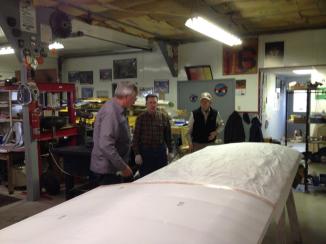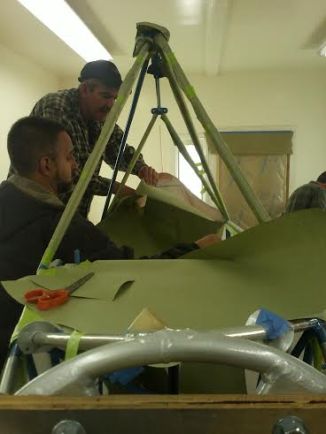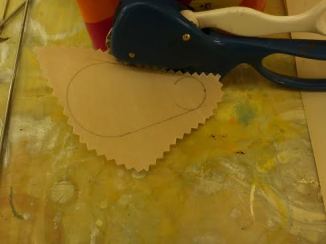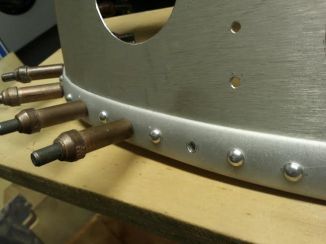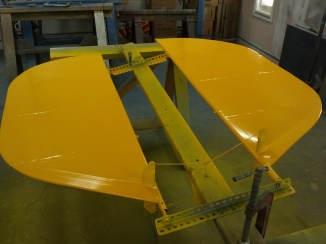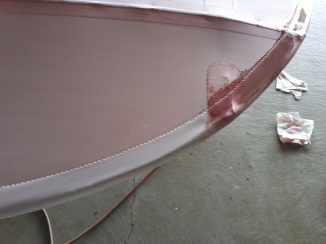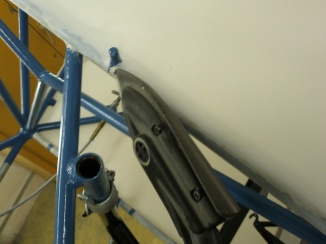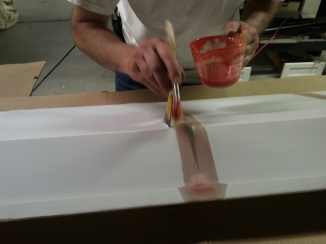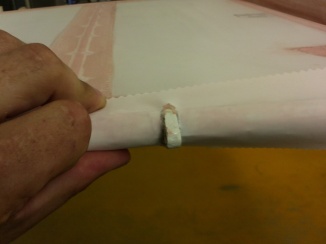
So we had a chance to get back to work on the project. We are still taping the fuselage, around the firewall and across all the tubes that are against the fabric from the inside. This protects the fabric from wear on the frame when it is flying. On most of the fuselage we are using clear poly-brush. When we paint it from the outside it doesn’t matter what color we use on the tapes but when you look inside the cockpit you can see all the red tapes. Since we are trying to keep the look clean we used clear to make it all look the same. On the tail, however we did use the red poly brush because you are not able to see inside of it from the fuselage.
Some of the places we have to get creative in cutting out the tapes to get them to fit and look good when they are on. I was cutting the tapes like you would when you make a snowflake out of paper, fold it and cut out the middle this gave me a nice even hole that can be shaped around the rudder support.
When gluing down some of the long tapes you have to be careful that you get them straight. This can prove to be difficult when the frame isn’t exactly straight.
Also we had too much poly-tack on an area of the tail we were prepping for tape. An easy way to remove poly-tack is to get some MEK on a rag an just rub in off the fabric. MEK is a very strong chemical like acetone that we use to clean out brushes and the spray guns.
Next work night we will hopefully be getting the rest of the tapes on and a few drain holes set. Then we can iron it all down and get ready for silver! Yay, more spraying!

